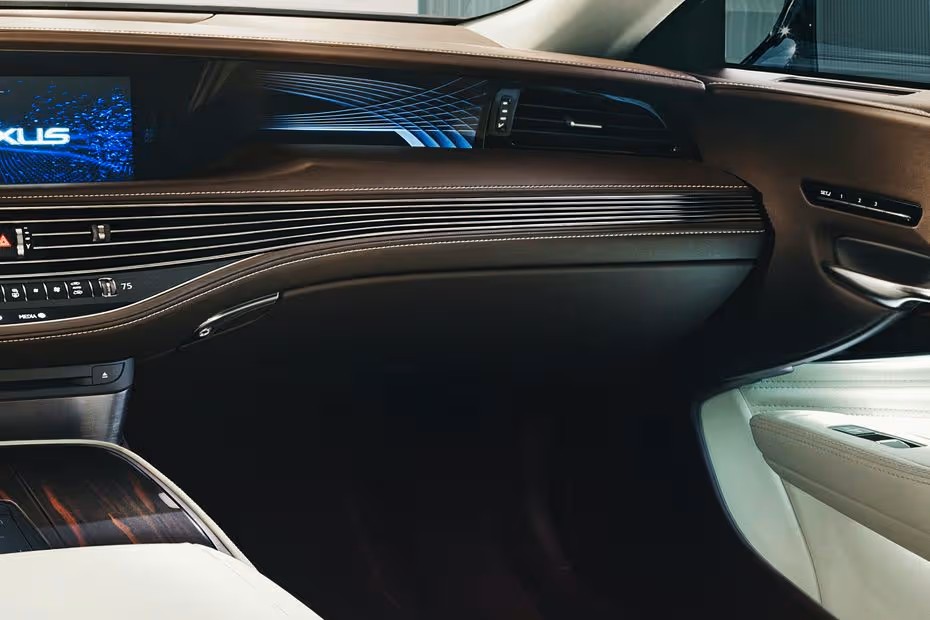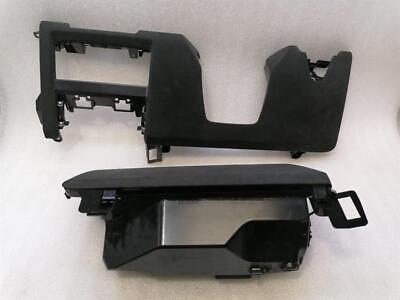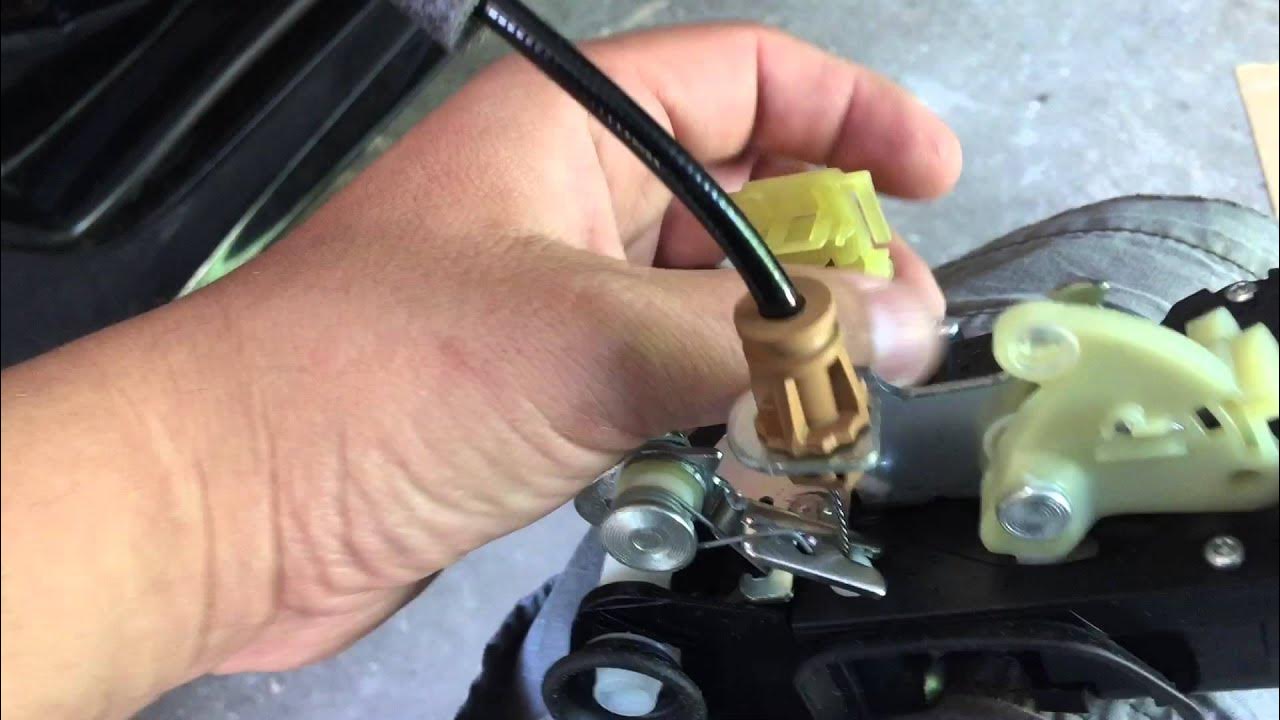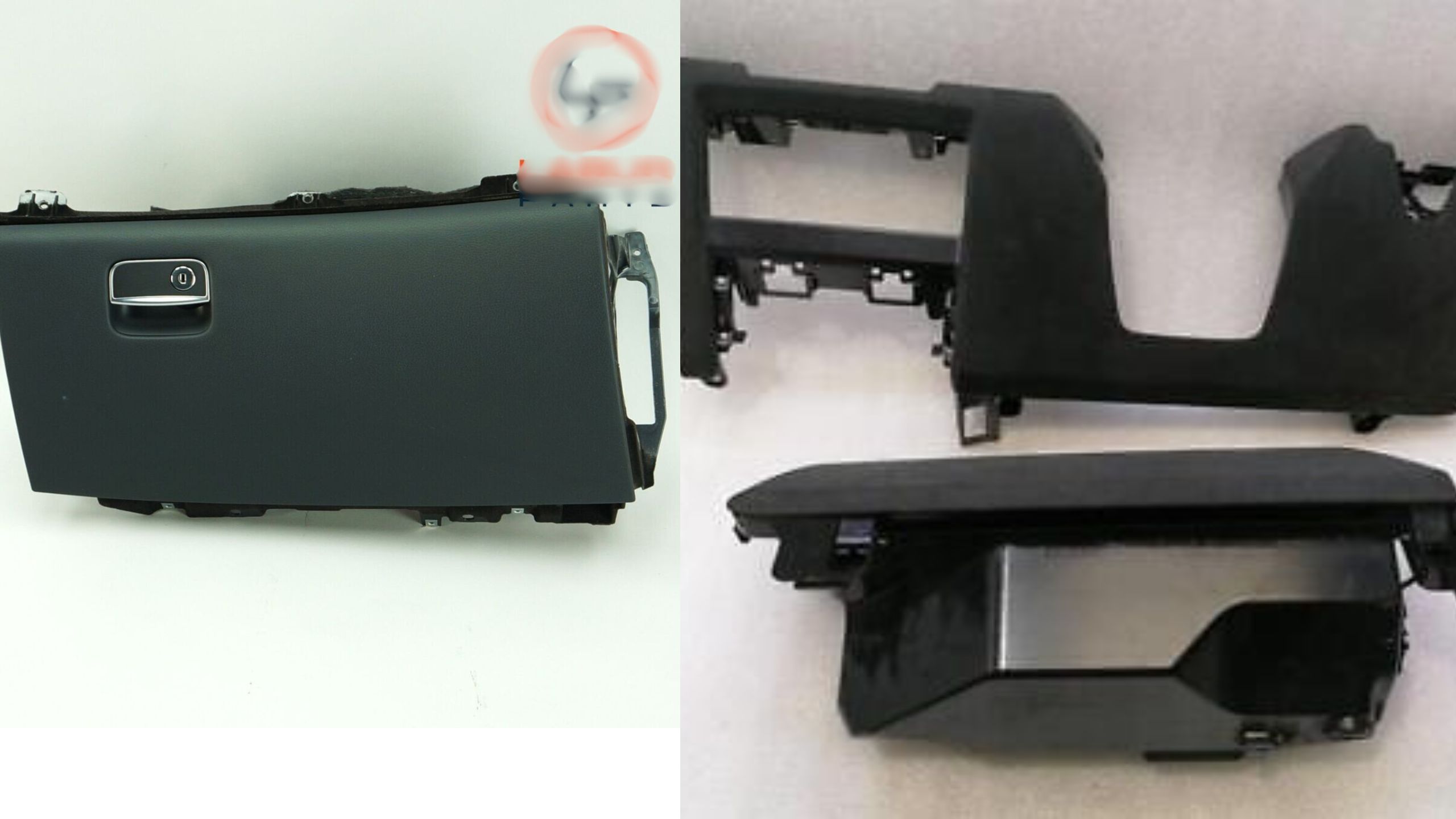The glovebox, that seemingly simple compartment in your vehicle’s dashboard, represents a critical intersection of functionality, convenience, and engineering reliability.
While often overlooked in automotive discussions, this humble storage space endures thousands of opening and closing cycles throughout a vehicle’s lifetime, making its mechanical integrity crucial for long-term ownership satisfaction.
The difference between a well-engineered glovebox and a poorly designed one becomes apparent over time, with quality units maintaining smooth operation for decades while inferior designs begin showing signs of wear within the first few years of ownership.
Understanding glovebox reliability involves examining several key components: the latch mechanism, hinge design, internal damping systems, and overall build quality.
Premium manufacturers invest significantly in these seemingly minor details, utilizing high-grade materials, precision engineering, and extensive testing protocols to ensure their gloveboxes can withstand the rigors of daily use.
Conversely, cost-cutting measures in budget vehicles often manifest most visibly in these secondary systems, where cheaper plastics, simplified mechanisms, and inadequate quality control lead to premature failures that frustrate owners and compromise the overall vehicle experience.
This comprehensive analysis examines ten distinct glovebox designs, highlighting five models renowned for their exceptional durability and five notorious for their propensity toward latch failures and mechanical issues.
Five Gloveboxes That Never Break
These exceptionally built storage compartments feature robust hinges and precision-manufactured latching mechanisms that maintain smooth operation and secure closure through years of daily use.
Their thoughtful engineering includes reinforced mounting points and durable materials that resist the stress concentrations typically created by overloading or aggressive opening and closing cycles.
From temperature extremes that cause material expansion to the constant vibration of normal driving, these remarkable gloveboxes continue operating like new without developing play or looseness in their mechanisms.
Owners report decades of trouble-free operation with these dependable storage solutions—a often-overlooked quality feature that proves its worth through consistent functionality and maintained interior aesthetics throughout ownership.
1. Mercedes-Benz S-Class (W222/W223) Glovebox System
The Mercedes-Benz S-Class glovebox represents the pinnacle of automotive compartment engineering, embodying the German manufacturer’s obsessive attention to detail and commitment to long-term reliability.
This sophisticated system utilizes a multi-point latch mechanism constructed from high-grade steel alloys, ensuring consistent engagement and release forces throughout hundreds of thousands of operating cycles.
The primary latch incorporates a precision-machined cam mechanism that distributes stress evenly across multiple contact points, eliminating the single-point-of-failure issues that plague lesser designs.
The hinge assembly features ball-bearing pivots manufactured to aerospace tolerances, providing silky-smooth operation that remains consistent even after decades of use.
Mercedes engineers incorporated a dual-stage damping system utilizing both mechanical and hydraulic elements to control the glovebox’s opening and closing motion.
This sophisticated damping prevents the harsh slamming that can damage internal components while ensuring the compartment opens at a controlled, predictable rate regardless of vehicle orientation or ambient temperature.

Material selection reflects Mercedes’ commitment to longevity, with the glovebox shell constructed from a specially formulated polymer blend that resists UV degradation, temperature cycling, and chemical exposure from common automotive fluids.
The interior features premium soft-touch materials that maintain their appearance and tactile properties throughout the vehicle’s service life. Even the internal lighting system utilizes LED technology with projected lifespans exceeding 50,000 hours, ensuring illumination remains bright and consistent.
The latch release mechanism incorporates Mercedes’ signature over-engineering approach, featuring redundant spring systems and a self-adjusting tension mechanism that compensates for wear over time.
This design ensures the glovebox maintains its precise fit and finish throughout the vehicle’s lifetime, with many examples showing no visible wear or operational degradation even after 200,000+ miles of service.
Independent testing has documented S-Class gloveboxes maintaining their original closing force specifications within 2% after 100,000 operating cycles, a testament to the system’s exceptional engineering integrity.
Quality control measures during manufacturing include individual testing of each glovebox assembly, with automated systems verifying latch engagement force, damping characteristics, and alignment tolerances before installation.
This meticulous approach ensures every unit meets Mercedes’ exacting standards, contributing to the model’s reputation for exceptional build quality and long-term reliability.
2. Lexus LS Series Precision-Engineered Glovebox
Lexus has built its reputation on meticulous attention to detail and unwavering reliability, characteristics that extend to even the most mundane components like the glovebox assembly.
The LS series glovebox exemplifies Japanese engineering philosophy, where every component is designed and manufactured to exceed expected service life while maintaining precise tolerances and smooth operation throughout its operational lifetime.
This commitment to excellence transforms a simple storage compartment into a showcase of engineering precision and material science. The latch mechanism utilizes a sophisticated three-point engagement system that distributes loading forces across multiple contact surfaces, eliminating stress concentrations that typically lead to premature failure in conventional designs.
Each latch point incorporates precision-molded components manufactured from high-performance engineering plastics that undergo extensive testing for stress cracking, fatigue resistance, and dimensional stability across extreme temperature ranges.
The primary latch incorporates a self-lubricating bearing system that maintains smooth operation without requiring periodic maintenance or adjustment.
Lexus engineers devoted considerable effort to the glovebox’s damping system, developing a proprietary viscous damper that provides consistent resistance throughout the opening and closing cycle.
This system utilizes specially formulated silicone fluid that maintains its viscosity characteristics across temperature extremes from -40°F to 185°F, ensuring consistent operation regardless of climate conditions.

The damper housing features precision-machined components with tolerances measured in thousandths of an inch, contributing to the system’s remarkable longevity and consistent performance.
The hinge assembly represents another area where Lexus’ attention to detail becomes apparent. Rather than utilizing conventional pin-and-bushing arrangements common in lesser vehicles, the LS series employs a sophisticated bearing system with integrated seals that prevent contamination while maintaining smooth operation.
The hinge pins are manufactured from hardened steel and undergo a specialized coating process that provides superior wear resistance and corrosion protection.
Material selection throughout the glovebox assembly reflects Lexus’s commitment to long-term durability. The main compartment utilizes a specially formulated ABS plastic that incorporates UV stabilizers and impact modifiers, ensuring the material maintains its structural integrity and appearance even after prolonged exposure to harsh automotive environments.
Interior surfaces feature premium soft-touch materials that resist staining, cracking, and fading while maintaining their luxurious feel throughout the vehicle’s service life.
The internal organization system demonstrates Lexus’ understanding of practical functionality, incorporating adjustable dividers, integrated pen holders, and a dedicated space for the owner’s manual.
These features are seamlessly integrated into the overall design without compromising structural integrity or adding unnecessary complexity that could lead to reliability issues.
3. Porsche 911 (992) Engineered Storage Solution
Porsche’s approach to glovebox design reflects the company’s racing heritage and commitment to precision engineering, creating a storage solution that performs flawlessly under the demanding conditions typical of high-performance driving.
The 911’s glovebox system incorporates design elements derived from aerospace applications, utilizing lightweight yet incredibly strong materials and precision manufacturing techniques that ensure reliable operation even under extreme G-forces and temperature variations encountered during spirited driving.
The latch mechanism represents a masterpiece of mechanical engineering, featuring a single-point release system that provides positive engagement while requiring minimal operating force.
This design utilizes a sophisticated cam mechanism manufactured from precipitation-hardened stainless steel, providing exceptional strength and corrosion resistance.
The cam surfaces undergo a specialized surface treatment that creates an ultra-smooth finish, reducing friction and wear while ensuring consistent operation throughout the component’s service life.
Porsche engineers incorporated extensive vibration analysis into the glovebox design, recognizing that high-performance vehicles subject components to significantly higher stress levels than conventional automobiles.
The resulting design features strategic reinforcement points and optimized geometry that effectively isolates the glovebox from chassis vibrations while maintaining structural integrity.
This attention to vibration management ensures the latch mechanism remains properly aligned and functions smoothly even after extended high-performance driving sessions.

The hinge system utilizes principles derived from Porsche’s motorsport experience, incorporating lightweight yet incredibly strong titanium alloy components that provide exceptional fatigue resistance.
The hinge pins feature an integrated lubrication system that automatically distributes specialized grease throughout the bearing surfaces, ensuring smooth operation without requiring periodic maintenance.
This system maintains its effectiveness even under extreme temperature conditions, from desert heat to arctic cold. Material selection throughout the glovebox assembly prioritizes weight reduction without compromising strength or durability.
The main compartment utilizes carbon fiber-reinforced polymer construction that provides a superior strength-to-weight ratio compared to conventional materials.
This construction technique, borrowed from Porsche’s race car development, creates a component that is both incredibly light and remarkably strong, capable of withstanding the demanding loads encountered during high-performance driving.
The interior organization system reflects Porsche’s understanding of driver needs, incorporating dedicated storage spaces for essential items like registration documents, emergency supplies, and personal items.
These features are seamlessly integrated into the overall design using the same high-quality materials and manufacturing techniques employed throughout the vehicle, ensuring consistent quality and long-term reliability.
4. BMW 7 Series (G70) Advanced Glovebox Technology
BMW’s flagship 7 Series glovebox represents the convergence of traditional German engineering excellence with cutting-edge manufacturing technology, creating a storage solution that combines exceptional durability with innovative functionality.
The design incorporates advanced materials science, precision manufacturing techniques, and sophisticated quality control measures that ensure reliable operation throughout the vehicle’s extended service life while providing features and capabilities that exceed traditional expectations for this type of component.
The latch mechanism utilizes BMW’s proprietary soft-close technology, creating a system that requires minimal force to initiate closure while providing a satisfying, premium feel that reinforces the vehicle’s luxury positioning.
This technology incorporates a sophisticated mechanism that gradually increases resistance as the glovebox approaches its fully closed position, ensuring positive engagement while preventing the harsh slamming that can damage internal components.
The system utilizes precision-machined components manufactured from high-strength aluminum alloys that provide exceptional durability while maintaining precise tolerances throughout extended service life.
BMW engineers incorporated extensive computer modeling and finite element analysis into the glovebox design process, optimizing component geometry and material distribution to maximize strength while minimizing weight.
This analytical approach identified potential stress concentrations and eliminated them through strategic design modifications, resulting in a component that significantly exceeds industry standards for durability and longevity.
The resulting design demonstrates BMW’s commitment to engineering excellence and attention to detail that extends to every aspect of vehicle construction.

The hinge system features BMW’s advanced bearing technology, utilizing specially formulated polymer bearings that provide exceptional wear resistance while maintaining smooth operation throughout hundreds of thousands of operating cycles.
These bearings incorporate solid lubricants that eliminate the need for periodic maintenance while ensuring consistent performance across extreme temperature ranges.
The hinge geometry incorporates multiple contact points that distribute loading forces evenly, preventing premature wear and ensuring long-term reliability.
Material selection throughout the glovebox assembly reflects BMW’s commitment to sustainability and environmental responsibility without compromising performance or durability.
The main compartment utilizes recycled materials that meet or exceed the performance characteristics of virgin materials while reducing environmental impact.
These materials undergo extensive testing to ensure they maintain their properties throughout the vehicle’s service life, including resistance to UV degradation, temperature cycling, and chemical exposure from common automotive fluids.
The internal organization system incorporates innovative features that enhance functionality while maintaining structural integrity. These include integrated charging ports for electronic devices, adjustable storage compartments, and premium lighting systems that provide excellent visibility while consuming minimal power.
All these features are seamlessly integrated into the overall design using the same high-quality materials and manufacturing techniques employed throughout the vehicle.
Also Read: 5 Cabin Air Filters Placed For Easy Access And 5 That Require Disassembly
5. Audi A8 (D5) Precision-Crafted Storage System
Audi’s flagship A8 glovebox exemplifies the German manufacturer’s philosophy of “Vorsprung durch Technik” (advancement through technology), incorporating sophisticated engineering solutions and premium materials that create a storage compartment capable of maintaining flawless operation throughout decades of service.
The design represents the culmination of extensive research and development efforts focused on creating a component that not only meets functional requirements but exceeds customer expectations for quality, durability, and refinement.
The latch mechanism incorporates Audi’s innovative electromagnetic assist technology, creating a system that provides effortless operation while maintaining positive engagement under all conditions.
This technology utilizes sophisticated sensors that detect the user’s intent and provide appropriate assistance, ensuring smooth operation regardless of ambient temperature, vehicle orientation, or user strength.
The electromagnetic system incorporates multiple redundancy features that ensure reliable operation even in the unlikely event of component failure, demonstrating Audi’s commitment to long-term reliability and customer satisfaction.
Audi engineers devoted considerable attention to the glovebox’s acoustic characteristics, recognizing that premium customers expect refined operation without unwanted noise or vibration.
The resulting design incorporates sophisticated damping materials and optimized geometry that effectively isolates the glovebox from chassis vibrations while minimizing operational noise.
This attention to acoustic refinement ensures the glovebox operation remains virtually silent, contributing to the vehicle’s overall premium character and customer satisfaction.

The hinge system utilizes Audi’s advanced materials technology, incorporating specially formulated polymer composites that provide exceptional strength and durability while maintaining precise tolerances throughout extended service life.
These materials undergo extensive testing to ensure they maintain their properties under extreme conditions, including temperature cycling, UV exposure, and chemical contact with common automotive fluids.
The hinge geometry incorporates multiple bearing surfaces that distribute loading forces evenly, preventing premature wear and ensuring long-term reliability.
Material selection throughout the glovebox assembly reflects Audi’s commitment to premium quality and environmental responsibility. The main compartment utilizes advanced thermoplastic materials that provide superior strength and durability while incorporating recycled content that reduces environmental impact.
These materials undergo extensive quality control testing to ensure they meet Audi’s exacting standards for appearance, tactile properties, and long-term durability.
The internal organization system demonstrates Audi’s understanding of modern customer needs, incorporating integrated technology features and flexible storage solutions that adapt to changing requirements.
These include wireless charging capabilities, adjustable compartment dividers, and premium LED lighting systems that provide excellent visibility while consuming minimal power.
All these features are seamlessly integrated into the overall design using the same high-quality materials and manufacturing techniques employed throughout the vehicle, ensuring consistent quality and long-term reliability that meets Audi’s reputation for engineering excellence.
Five Gloveboxes with Failing Latches
These poorly constructed storage compartments develop frustrating latch failures within the first few years, often beginning with intermittent opening before progressing to complete inability to stay closed during normal driving.
Their inadequate spring mechanisms and fragile plastic components create perfect conditions for premature failure, particularly when subjected to the thermal cycling and vibration of typical vehicle operation.
Owners report the embarrassing experience of gloveboxes randomly popping open during turns or stops, spilling contents across the floor and creating dangerous distractions during critical driving moments.
What should be a simple, reliable storage feature instead becomes a constant source of irritation, with many frustrated owners resorting to tape, rubber bands, or expensive replacement assemblies just to maintain basic functionality.
1. Chevrolet Impala (2006-2016) Problematic Latch Design
The Chevrolet Impala’s glovebox represents a cautionary tale in automotive cost-cutting measures, demonstrating how seemingly minor design compromises can lead to widespread reliability issues that frustrate owners and damage brand reputation.
This particular design suffers from multiple fundamental flaws that manifest as premature latch failure, often occurring within the first 50,000 miles of service, making it one of the most problematic glovebox designs in recent automotive history.
The primary issue stems from the latch mechanism’s reliance on a single plastic pawl that bears the entire load when the glovebox is closed. This design philosophy prioritizes manufacturing cost reduction over long-term reliability, utilizing injection-molded plastic components that lack the strength and durability necessary for extended service life.
The pawl itself is manufactured from low-grade ABS plastic without reinforcement fibers or impact modifiers, making it susceptible to stress cracking and eventual failure under normal operating conditions.
The root cause of the latch failure can be traced to inadequate engineering analysis during the design phase, where computer modeling failed to account for real-world loading conditions and material degradation over time.
The plastic pawl experiences significant stress concentrations at critical points, particularly where it contacts the striker plate during closure. These stress concentrations, combined with the material’s inherent brittleness and susceptibility to environmental degradation, create conditions that inevitably lead to failure.

Temperature cycling compounds the problem significantly, as the plastic components undergo repeated expansion and contraction cycles that create internal stresses and gradually weaken the material structure.
The glovebox’s location within the vehicle’s dashboard exposes it to extreme temperature variations, from sub-zero winter conditions to summer temperatures exceeding 150°F. These thermal cycles accelerate material degradation and contribute to the premature failure of the latch mechanism.
Manufacturing quality control issues further exacerbate the design’s inherent weaknesses, with inconsistent material properties and dimensional variations contributing to unpredictable failure rates.
Some units fail within months of purchase, while others may last several years before exhibiting problems. This inconsistency suggests inadequate process control during manufacturing, with variations in material composition, molding parameters, and post-processing treatments affecting final component properties.
The failure typically manifests as the glovebox refusing to stay closed, with the latch mechanism unable to maintain engagement with the striker plate. In many cases, owners report that the glovebox will close initially but pops open during driving, particularly when encountering bumps or sudden stops.
This behavior not only creates inconvenience but also poses potential safety risks if loose items become projectiles during emergency maneuvers. Repair attempts often prove temporary, as replacement parts frequently exhibit the same design flaws as the original components.
Many owners report multiple failures over the vehicle’s service life, with some resorting to aftermarket solutions or permanent modifications to address the ongoing reliability issues. This pattern of repeated failures significantly impacts customer satisfaction and contributes to negative perceptions of overall vehicle quality.
2. Dodge Avenger (2008-2014) Structural Weakness Issues
The Dodge Avenger’s glovebox design exemplifies the consequences of prioritizing initial cost savings over long-term reliability, creating a component that appears adequate during initial quality assessments but reveals significant structural weaknesses under extended service conditions.
This design suffers from multiple interconnected issues that combine to create a reliability nightmare for owners, with failure rates significantly higher than industry averages and repair costs that often exceed the component’s original manufacturing cost.
The fundamental problem lies in the glovebox’s structural design, which utilizes thin-wall plastic construction without adequate reinforcement in critical stress areas.
The engineers responsible for this design failed to recognize that gloveboxes experience significant loading forces during normal operation, particularly when fully loaded with documents, emergency supplies, and personal items.
The resulting structure lacks the strength necessary to withstand these loads without permanent deformation or component failure. The latch mechanism compounds the structural issues by incorporating a design that concentrates stress at specific points on the glovebox housing.
When the latch engages, it creates point loads that exceed the material’s yield strength, leading to gradual deformation and eventual cracking around the latch mounting points.
This degradation process accelerates over time, with each operating cycle contributing additional stress and further weakening the already compromised structure.
Material selection represents another critical flaw in the Avenger’s glovebox design, with the manufacturer choosing low-cost plastic resins that lack the long-term stability necessary for automotive applications.

These materials exhibit significant property degradation when exposed to the thermal cycling, UV radiation, and chemical exposure typical of automotive environments.
The plastic becomes increasingly brittle over time, losing its ability to absorb impact energy and becoming susceptible to catastrophic failure. The hinge mechanism design further exacerbates the structural issues by creating uneven stress distribution across the glovebox housing.
The hinges themselves are under-engineered for the application, utilizing lightweight construction that lacks adequate strength margins. This design philosophy creates a cascading failure mode where initial hinge wear leads to misalignment, which increases stress on the latch mechanism and accelerates overall component degradation.
Manufacturing quality control issues compound the design’s inherent weaknesses, with inconsistent wall thickness, material contamination, and inadequate stress relief contributing to unpredictable failure patterns.
Some units exhibit problems within the first year of service, while others may function adequately for several years before failing catastrophically. This variability suggests inadequate process control and quality assurance procedures during manufacturing.
The typical failure pattern involves gradual degradation of the latch mounting points, with visible cracking and deformation becoming apparent over time.
As the damage progresses, the latch mechanism loses its ability to maintain proper engagement, leading to intermittent operation and eventual complete failure.
Many owners report that their glovebox becomes increasingly difficult to close properly, requiring excessive force that accelerates the damage progression.
3. Nissan Altima (2007-2012) Inadequate Material Selection
The Nissan Altima’s glovebox design represents a clear example of how inadequate material selection can undermine an otherwise reasonable design concept, creating reliability issues that manifest as premature component failure and customer dissatisfaction.
This particular design suffers from systematic material degradation that affects multiple components simultaneously, creating a cascading failure mode that often renders the entire glovebox assembly inoperable within a relatively short service period.
The primary material issue involves the plastic resin selected for the main glovebox housing and latch components, which lacks the UV stabilization necessary for automotive applications.
This oversight becomes particularly problematic in vehicles equipped with sunroofs or those frequently parked in direct sunlight, where UV exposure accelerates material degradation and leads to embrittlement and discoloration.
The plastic becomes increasingly fragile over time, losing its ability to withstand normal operating stresses and becoming susceptible to crack propagation.
The latch mechanism components suffer from similar material degradation issues, with the plastic pawl and striker components exhibiting rapid wear and dimensional changes under service conditions.
The material selected for these critical components lacks the wear resistance and dimensional stability necessary for repeated mechanical operation, leading to progressive deterioration that affects latch engagement reliability.
This degradation process is accelerated by temperature cycling and exposure to automotive fluids, which can cause chemical stress cracking in susceptible materials.
The problem is compounded by inadequate material testing during the design phase, where accelerated aging tests failed to accurately predict real-world performance characteristics.

The testing protocols did not account for the synergistic effects of multiple environmental stressors acting simultaneously, leading to overly optimistic durability predictions that proved incorrect under actual service conditions.
This represents a fundamental failure in the engineering validation process. Manufacturing processes further contribute to material performance issues, with inconsistent material properties resulting from inadequate process control during injection molding.
Variations in material composition, processing temperatures, and cooling rates create components with unpredictable properties and service life characteristics.
Some units exhibit rapid degradation while others perform adequately for extended periods, suggesting significant process variability that affects final component quality.
The environmental stress cracking phenomenon represents a particularly insidious failure mode, where the combination of mechanical stress and chemical exposure creates microscopic cracks that propagate over time until catastrophic failure occurs.
This type of failure is difficult to predict and often manifests suddenly, with the glovebox latch failing without warning. The crack propagation process is accelerated by temperature cycling and exposure to cleaning chemicals commonly used in automotive interiors.
The typical failure progression involves gradual discoloration and surface degradation of the plastic components, followed by the development of visible cracks around high-stress areas.
As the cracks propagate, the structural integrity of the latch mechanism decreases until it can no longer maintain proper engagement. Many owners report that their glovebox suddenly fails to stay closed, often during routine operation when the degraded components finally reach their ultimate strength limit.
4. Ford Focus (2012-2018) Manufacturing Defect Pattern
The Ford Focus glovebox design suffers from systematic manufacturing defects that create reliability issues affecting a significant percentage of production units, demonstrating how process control failures can undermine an otherwise adequate design concept.
These defects manifest as premature latch failure, misalignment issues, and inconsistent operation that frustrate owners and generate numerous warranty claims throughout the vehicle’s service life.
The primary manufacturing issue involves inconsistent tolerances in the latch mechanism components, with dimensional variations that affect proper engagement and disengagement forces.
These variations result from inadequate process control during injection molding, where fluctuations in material temperature, injection pressure, and cooling rates create components that deviate from design specifications.
The resulting dimensional inconsistencies prevent proper mating between latch components, leading to premature wear and eventual failure. Quality control procedures during assembly compound the manufacturing issues, with insufficient inspection protocols that allow defective components to proceed through the production process.
The assembly line workers lack adequate training or procedures to identify components that fall outside acceptable tolerance ranges, resulting in gloveboxes that function initially but develop problems shortly after entering service.
This represents a fundamental failure in quality assurance that affects customer satisfaction and warranty costs. The latch mechanism itself exhibits design sensitivity to manufacturing variations, with nominal performance heavily dependent on precise dimensional control that proves difficult to maintain in high-volume production environments.

Small variations in critical dimensions can significantly affect latch engagement forces and reliability, creating a design that is inherently sensitive to manufacturing variability. This sensitivity suggests inadequate design robustness that fails to accommodate normal manufacturing tolerances.
Material handling procedures during manufacturing introduce additional variability, with contamination and moisture exposure affecting final component properties.
The plastic resins used in glovebox construction are hygroscopic, meaning they absorb moisture from the environment, which can affect their mechanical properties and dimensional stability.
Inadequate material handling protocols allow moisture contamination that degrades component performance and contributes to premature failure.
The assembly process itself introduces opportunities for defect introduction, with manual operations that depend on worker skill and attention to detail.
The latch mechanism requires precise alignment during installation, but assembly procedures lack adequate fixturing or verification steps to ensure proper positioning.
Misalignment during assembly creates stress concentrations that accelerate wear and lead to premature failure under service conditions. Statistical analysis of warranty claims reveals distinct patterns that suggest systematic manufacturing issues rather than random failures.
Certain production periods exhibit significantly higher failure rates, indicating process problems that affected multiple units produced during specific time frames.
This pattern suggests inadequate process monitoring and corrective action procedures that allowed defective units to continue production without addressing root causes.
The typical failure manifestation involves gradual deterioration of latch engagement, with owners reporting that their glovebox becomes increasingly difficult to close properly over time.
The degradation process accelerates once initial wear occurs, creating a feedback loop where misalignment increases stress and accelerates further deterioration.
Many units require multiple repairs or replacements during the warranty period, suggesting that the underlying manufacturing issues persist in replacement components.
5. Hyundai Elantra (2011-2016) Design Oversight Problems
The Hyundai Elantra’s glovebox design represents a comprehensive failure in engineering oversight, incorporating multiple design flaws that interact to create a component with reliability characteristics far below industry standards.
These issues stem from fundamental misunderstandings of the loading conditions and environmental stresses that automotive gloveboxes must withstand, resulting in a design that appears adequate during initial evaluation but reveals significant weaknesses under extended service conditions.
The primary design oversight involves inadequate consideration of the dynamic loading conditions that occur during normal vehicle operation, particularly during acceleration, braking, and cornering maneuvers.
The glovebox experiences significant inertial forces during these events, which can exceed the static loads considered during the design phase. The latch mechanism lacks adequate strength margins to accommodate these dynamic loads, leading to premature failure when the forces exceed the component’s ultimate strength.
The structural design of the glovebox housing compounds the loading issues by incorporating stress concentrations that amplify the effects of applied forces.
Sharp corners, inadequate fillet radii, and abrupt section changes create locations where stress levels significantly exceed the material’s capabilities.
These stress concentrations act as crack initiation sites that propagate over time until catastrophic failure occurs, often without warning to the vehicle operator.
The latch mechanism design exhibits fundamental misunderstanding of the mechanical principles involved in proper latch operation, with geometry that creates unfavorable force distributions and high contact stresses.

The pawl design concentrates loads at specific points rather than distributing them across larger contact areas, creating conditions that accelerate wear and lead to premature failure. This design philosophy prioritizes manufacturing simplicity over long-term reliability.
Environmental considerations appear to have been inadequately addressed during the design phase, with component materials and geometry that are susceptible to degradation from temperature cycling, humidity exposure, and chemical contact.
The plastic components lack adequate UV protection and exhibit significant property changes when exposed to typical automotive environmental conditions. These property changes affect dimensional stability and mechanical strength, contributing to latch mechanism failure.
The hinge design exhibits similar oversights, with inadequate bearing surfaces and insufficient strength margins that lead to premature wear and eventual failure. The hinge pins are under sized for the application and lack adequate surface treatments to resist wear and corrosion.
This design philosophy creates components that function adequately initially but deteriorate rapidly under service conditions, leading to customer dissatisfaction and warranty claims.
Manufacturing tolerances specified in the design are inappropriate for the application, with dimensional requirements that are either too loose to ensure proper function or too tight to achieve economically in production.
This creates a situation where components may not function properly even when manufactured correctly, or where manufacturing costs become prohibitive to achieve required quality levels.
The tolerance stack-up analysis appears to have been inadequate, failing to account for the cumulative effects of multiple dimensional variations. The typical failure pattern involves progressive deterioration of latch engagement reliability, with owners experiencing intermittent operation that gradually worsens over time.
The failure process often accelerates once initial wear occurs, creating a feedback loop where misalignment increases stress and accelerates further deterioration.
Many owners report sudden complete failure after a period of gradually worsening performance, indicating that the degradation process reaches a critical point where catastrophic failure becomes inevitable.
Also Read: 5 Serpentine Belts That Last Forever And 5 That Constantly Squeal

